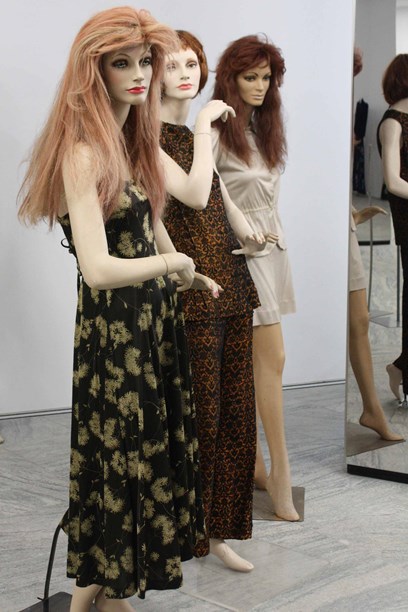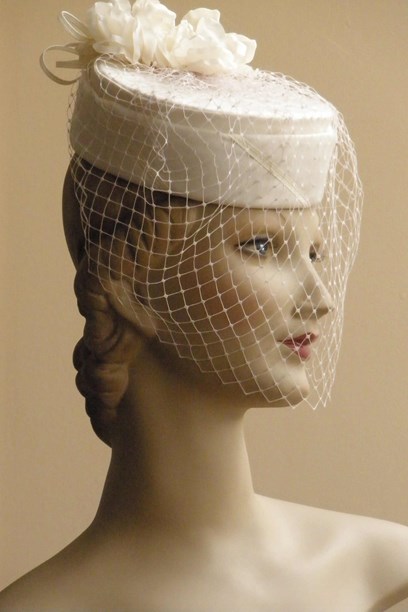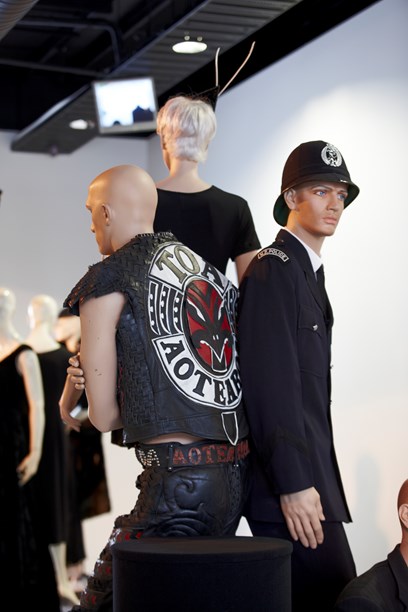Stories
Purfex Mannequins
1938-

Mannequin is a French word derived from the Dutch mannekijn (little man). Although sometimes used to describe a real-life fashion model, in New Zealand it most commonly refers to a model of the human figure found in shop and other displays.
Nobody knows for sure who created the first realistically sculpted, life-size mannequin. Its origins are open to conjecture. One theory is that 'fashion dolls', used to promote French fashion throughout Europe in the 18th century, were the forerunners of the mannequin as we know it today.
The arrival of the modern mannequin in the late 1800s is attributed in part to the invention of plate glass. Plate glass windows provided retailers with better opportunities to display their clothes, and mannequins were the perfect props on which to show them. These early mannequins looked eerily lifelike. They had real hair (sourced from nuns and the poor) and glass eyes and teeth made by dentists. Sadly, their careers tended to be short. Those moulded from wax were liable to melt in the heat generated in shop windows, either by lighting or the sun, and the models made of papier-mâché turned to pulp if they had the misfortune to get wet.
When Austin Purdy, who went on to become New Zealand’s main mannequin manufacturer, began repairing display mannequins in the basement of his Auckland home in 1938, wax and papier-mâché had been supplanted by the much hardier plaster-of-Paris. By the 1960s, fibreglass, chosen for its lightness, resilience and durability, was the material of choice. Purdy’s company Purfex Display Models Ltd, was one of the first in this country to use fibreglass and also the first to have its own rotational moulding machine and metal moulds for producing dress forms in polyethelene, a lightweight plastic.
Purfex mannequins were bought by department stores, of which only a handful remain, specialty boutiques, museums, art schools and fashion designers. The company began exporting to Australia and the South Pacific in the 1970s. One of the fashion identities for whom Purfex made mannequins to order was Gus Fisher who, in addition to his own El Jay label, manufactured Christian Dior originals here under licence for 33 years. 'Gus’s girls', as they are affectionately known, model today for the NZFM exhibitions, alongside other mannequins from the Purfex collections.

Purfex mannequins in the NZFM ‘The Age of Aquarius’ exhibition, 2013.
Mannequins have always embodied the physique fashionable at the time, voluptuous in the Edwardian era, androgynous in the 1920s, leggy in the dollybird 1960s, waif-like in the 1990s and more athletic today. The prevailing shape, when Austin Purdy started making his own mannequins in the late 1940s, was influenced by the mannequins created for Christian Dior to display his New Look. Styled after Dior’s elegant, wasp-waisted, flesh and blood models, they usually had one leg in profile, an arched foot and the body leaned slightly backward. Their vital statistics (in inches) were 36, 22, 37.
Glen Wilkin-Holland joined the Purfex team in the late 1970s. A few years later, he was appointed factory manager. In 1998, he bought the company from the Purdy family in partnership with Fraser Moreton whose technical and engineering skills were a great asset to the business. From sanding and finishing the fibreglass forms and mannequins when he was first employed, Glen graduated to painting the models’ faces. “Realism is a lot more work,” he says, “but when it is well done it creates an illusion of life or a vision thereof.” Painted faces, like featureless mannequins, come and go. Glen describes the passing fashion for headless mannequins in 2000 as "kind of spooky".

For an article on Purfex mannequins in Simply You magazine in 2001, Cindy Wilson photographed Purfex owners Glen Wilkin-Holland and Fraser Moreton with a live model wearing a black sheath dress from Scotties and sling-backs by Emma Hope. The image subsequently appeared on a Purfex company Christmas card.
The number-plate on Glen Wilkin-Holland’s car is DUMMYZ , not a term he would ever apply to his mannequins. "A dress form is a dummy,” he says. “ Anything that resembles a full human form, we call a mannequin."
Naming mannequins is an old tradition. All the display heads in the Purfex Retro Range, which dates back to the 1940s and is still made today in the original moulds, have their own names. There’s Archie and his girlfriend Olive, Candy, a hoity-toity blonde, Austin, a suave-looking character named after Purfex founder Austin Purdy, and the lovely Diane whose classic features and enigmatic smile must have helped to sell hundreds of hats over the years. Diane was named after Glen Wilkin-Holland’s mother.

Retro display head JEN004 (Diane), wearing a satin pillbox with veil by Lindsay Kennett.
Full-figure mannequins of men, women and children, models with interchangeable arms and legs, mannequins with arched feet for high heels, plus-size mannequins, classic dress forms, resin hands for rings, display heads, religious statues – at the peak of its production, Purfex made them all. In addition to its house ranges, the company manufactured under licence for major international mannequin makers, Decter of Los Angeles and Hindsgaul which is based in Denmark. As the business grew so did the need for larger premises. Between 1938 and 2002, Purfex moved five times to increasingly more spacious workshops in and around Auckland.

Purfex male mannequins in the New Zealand Fashion Museum 'Black in Fashion' exhibition, 2011.
By 2012, Glen Wilkin-Holland had decided that bigger was no longer better. In what may well have been the mannequin sale of the century, he sold off mannequins, moulds, showroom samples, show forms and factory furniture, keeping just enough materials and equipment to run the business, on a smaller scale, from home. Purfex, which began as a home-based business, all those years ago, has come full circle.
Text by Cecilie Geary. Banner image of Purfex owners Fraser Moreton and Glen Wilkin-Holland with a live model wearing a black sheath dress from Scotties. Photo by Cindy Wilson. Image © Simply You.
Last published February 2017.